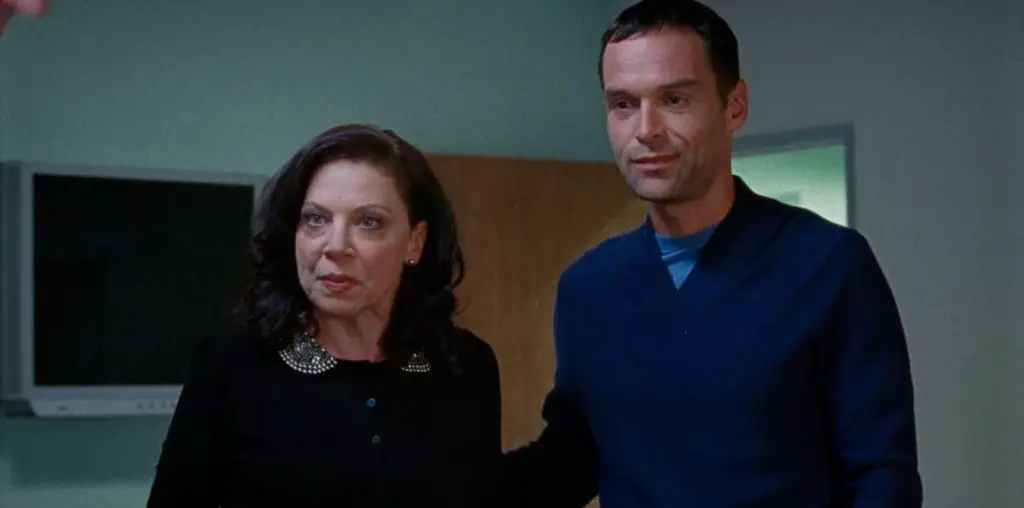
Shinya Tsukamoto’s films grapple with the inability of the human body to express the torment of the soul. Unlike most directors, the body–and soul–is his. In his unmatched debut “Tetsuo: Iron Man,” Tsukamoto surgically inserts a steal rod into his thigh, unleashing the apocalyptic fury of a sexually repressed salaryman. In “Tokyo Fist,” the director regains his girlfriend’s attention by going round after round with a deadly boxer until his shattered face falls apart like Playdough. In “Bullet Ballet,” Tsukamoto’s fifth film (now available on DVD in the US), the director turns guilt over his girlfriend’s suicide into an obsession with the instrument of her destruction–and a quest for his own. Goda (Tsukamoto) returns home to discover his girlfriend has shot herself with a pistol. Sadly this isn’t a shocking occurrence to an American audience–glory be to the second amendment–but in Tokyo it’s a different story. Getting a firearm proves to be more difficult than simply walking into the neighborhood Wal Mart.
Goda’s early attempts to purchase a “Chief’s Special” end in fraud and disappointment. With his obsession growing, Goda is robbed and beaten by a street gang. Undeterred, he decides he will build a gun himself. This endeavor will also end in disappointment and failure, but along the way he becomes infatuated with Chisato (Kirinia Mano), a female gang member. Eventually the grieving loner and the nihilistic punks find common ground in their shared obsession with self-annihilation.
Tsukamoto’s films always toe a thin line between the lift of his envelope pushing visuals–anyone who’s seen “Tetsuo’s” ice auger phallus know what I’m talking about–and the drag of his loose storytelling, and uneven pacing. In “Bullet Ballet,” however, Tsukamoto is more restrained–as is his performance–and the indelible images are second to none.
Goda assembles a video loop juxtaposing close-ups of a pistol with images of artillery rounds decimating houses, buildings and sending soldiers scurrying. In one of Tskamoto’s mini-music video moments, the tape plays faster and faster, to a shattering rock soundtrack. The revolver is finally overwhelmed by a rising mushroom cloud. The message: that every act of violence is chained to a greater act, echoes Kinji Fukasaku’s epic “Yakuza Papers” series. But the approach here is pure Tsukamoto. The director places his protagonist in the editor’s chair as if to say, “go ahead, create a montage to express how you are feeling,” and then pounds the moment home with a crushing use of sound.
In another stunning scene, Chisato plays “the subway game.” The expressionless punk stands on a subway platform with her back to the train, her heels hanging over the ledge. When the train rushes behind her, seemingly grazing her high heels, I lost my breath—and almost fell in as well.
It all seems to build toward a climactic showdown: Goda finally gets the pistol he’s been dreaming about; a careless act of bloodlust leads the gang toward the death pact they’ve been craving. But satisfaction isn’t in the cards for any of these characters. Unlike Tsukamoto’s previous films these bodies have limits, yet the primal desire to destroy is never-ending.
After a close call with a hit man, Chisato and Goda limp away in opposite directions. Little by little, they start to run until they’re dragging their bodies desperately from something that they can neither catch nor get away from. Chisato’s frenzied breathing grows louder and louder, and then the film ends, mid-breath.

